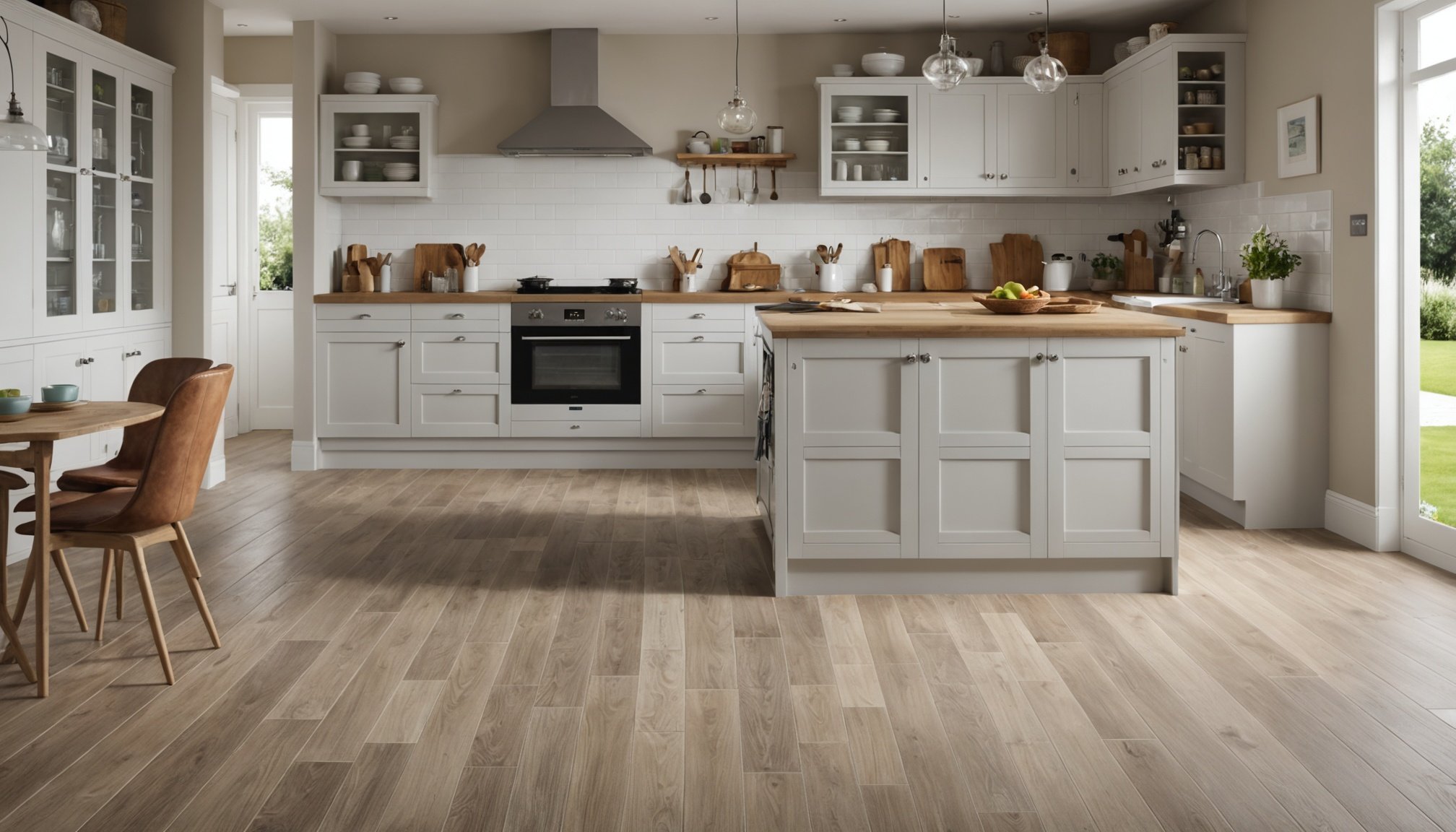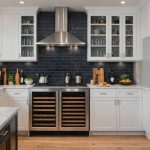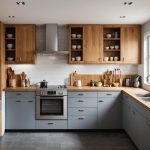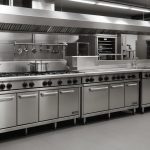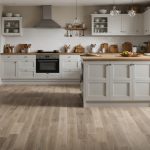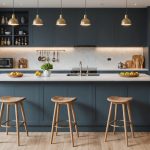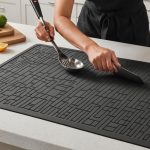Understanding the Coastal Environment
In coastal areas, unique environmental factors, such as humidity and salt air, significantly influence flooring choices. Coastal climates are characterized by higher humidity levels, which can cause flooring materials to warp or swell. Salt air can also lead to the corrosion of certain materials, making it essential to choose moisture-resistant flooring for long-lasting durability.
Selecting the right flooring demands understanding the impact of these elements. For instance, wood flooring might not be the ideal choice as it absorbs moisture, while moisture-resistant options like vinyl or tile provide better resilience. These materials are specifically designed to withstand humidity and protect against damage, ideal for maintaining their appearance in harsh coastal environments.
Topic to read : Revamp your uk kitchen: the ultimate step-by-step guide to designing a chic and functional breakfast bar
Every region presents its own climate-specific challenges, especially in kitchen flooring, where spills are common. Here, water-resistant options are paramount, ensuring functionality without sacrificing aesthetics. The importance of considering local conditions cannot be overstated in the decision-making process, as it directly impacts flooring longevity and performance.
Incorporating materials with these qualities into your coastal home ensures your floors remain as stunning as your ocean views—imbued with resilience to the charming yet challenging coastal climate.
Also to read : Discover incredible uk savings: the definitive guide to top-tier commercial kitchen equipment
Ideal Flooring Materials for Coastal Kitchens
Choosing the right kitchen flooring options is crucial for coastal homes due to their unique environmental demands. Floors in these settings must be both aesthetically pleasing and capable of withstanding elements like moisture and salt.
Tile Flooring
Tile flooring emerges as a top contender for coastal-friendly materials. Its durability in wet environments makes it ideal for kitchens near the sea. Tiles come in various aesthetic variations such as porcelain, ceramic, and stone, allowing homeowners to embrace the coastal vibe through unique patterns and textures. As for maintenance, tiles are relatively easy to clean, yet care should be taken to maintain grout lines to prevent mold.
Vinyl Flooring
Vinyl flooring stands out as a budget-friendly option. Its water-resistant nature makes it particularly suited to coastal kitchens. Ease of installation adds to its appeal, reducing time and labour costs. Design flexibility is another plus, with options mimicking the look of wood or stone, giving homeowners room to explore different styles.
Wood Flooring
While wood flooring boasts a warm aesthetic, hardwood vs. engineered wood presents different pros and cons. Engineered wood provides better moisture resistance, crucial for coastal areas. Applying protective coatings can further shield against moisture. Ultimately, the aesthetic appeal of wood seamlessly blends natural beauty with coastal design, though it demands diligent upkeep.
Aesthetic Considerations for Coastal Design
Envisioning coastal interior design begins with selecting a color palette that captures the essence of the sea and shoreline. Soft blues, sandy beiges, and calming whites perfectly reflect the natural beauty and serene environment of coastal landscapes. These colors not only enlarge spaces visually but also create a relaxing atmosphere, reminiscent of a breezy day at the beach.
Moreover, flooring aesthetics must be considered to harmoniously blend with this color palette. Think nautical: weathered wood, natural stone, or even slick ceramic tiles can imitate driftwood or beach stones underfoot. Selecting the right flooring not only enhances the coastal interior design but also provides sturdy, practical surfaces that can withstand sand and dampness typical of a coastal setting.
To understand this style better, visualize successful coastal kitchen designs where flooring and color schemes are beautifully united. For example, a kitchen might feature cream-coloured cabinetry with navy blue tiles or a sea-green backsplash that mirrors the coastal landscape’s richness.
Incorporating these elements creates a light-filled, airy space with a sense of openness. Consider how these welcoming environments encourage ease, engaging with our sensibilities and inspiring relaxation.
Maintenance Tips for Coastal Kitchen Flooring
Coastal areas present unique challenges for kitchen flooring maintenance due to higher humidity and salt exposure. Implementing regular upkeep routines tailored for these conditions can extend the longevity of materials significantly.
Special attention should be paid to cleaning tips that suit the coastal environment. Regular sweeping and vacuuming remove abrasive particles like sand, which can damage surfaces over time. For mopping, a damp mop with a mixture of water and a mild, pH-balanced floor cleaner is ideal. Avoid overly wet mops as excess moisture may seep into seams or cracks, potentially harming the subfloor. In high moisture areas, consider using a dehumidifier to maintain optimal humidity levels.
Signs of wear are crucial indicators for assessing when to replace flooring. Look for cracking, warping, or fading, particularly around heavily trafficked zones. Discoloration might signal salt deposits influencing material integrity, necessitating a review of cleaning methods or a flooring upgrade.
By adhering to these thoughtful maintenance tips, homeowners can enjoy a resilient and aesthetically pleasing kitchen floor that withstands coastal conditions. Simple adjustments in routine and using recommended products can preserve the flooring’s appearance and functionality for years.
Cost Comparisons of Flooring Options
Choosing the right kitchen flooring involves a careful look at cost factors. Balancing initial expenses with long-term value is crucial in effective budget planning.
Analysis of Initial Costs
Various materials present different initial costs. Vinyl flooring, for instance, typically offers a lower price point, ranging between £5 to £15 per square metre. On the other hand, hardwood or stone can reach upwards of £50 per square metre. These options tend to invest in better aesthetics and potentially greater value for investment.
When examining these materials, it’s important to consider not just upfront expense, but how the costs compare against longevity. For example, while laminate might have a modest price tag, it may not endure the same wear and tear as ceramic tiles or hardwood, which are known for their durability and lifespan.
Long-Term Value
Quality kitchen flooring can offer significant return on investment. Durable options, although initially pricier, often reduce maintenance costs over time. Money saved on repairs and replacements can add up, justifying the higher initial expenditure. Consider that while vinyl offers a low starting price, it often requires replacement sooner, which might not be value efficient for long-term goals.
Investing wisely based on usage, aesthetics, and household needs will optimise your budget, providing both immediate and future value.
Case Studies and Visuals
When reimagining your kitchen flooring, real-life case studies of coastal kitchens provide enlightening insights. For instance, one homeowner, Sarah Adams, transformed her quaint beach house kitchen with distressed white oak planks, offering an inviting and timeless coastal charm. Her experience emphasized the durability and ease of maintenance the flooring provided—perfect for handling sandy feet trailing inside.
In another stunning example, the Wilsons opted for ceramic tiles with a pebble-like texture. These tiles not only gave their kitchen a sense of continuity with the natural seaside environment but also offered resistance against humidity—a common coastal area concern. The Wilsons appreciated the visual appeal and practicality, often mentioning how friends would compliment the seamless aesthetics their flooring brought to the kitchen.
Interior design case studies often highlight diverse real-life applications, effectively showcasing how various flooring choices can align with different interior design themes. Consider the Johnson family’s kitchen; they selected light ash wood laminate, balancing their home’s modern minimalist vibe while maintaining the space’s warmth and openness. Testimonials from the Johnsons reveal their satisfaction with both style and scratch resistance as they accommodate both playful pets and energetic kids.
These examples underline the importance of choosing kitchen flooring that reflects personal style and meets practical needs.

